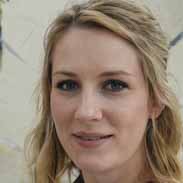Translation Occurs in Three Phases – Flashcards
Unlock all answers in this set
Unlock answersquestion
initiator tRNA
answer
tRNA carrying the first amino acid in the polypeptide
question
translation initiation in eukaryotes and bacteria
answer
small ribosomal subunit binds near the 5 end of mRNA and identifies start codon sequence
question
final stage of initiation
answer
large subunit joins small subunit to forma intact ribosome and translation begins
question
final stage of initiation
answer
large subunit joins small subunit to forma intact ribosome and translation begins
question
second stage of initiation
answer
initiator tRNA binds to start codon
question
charged tRNA
answer
tRNAs used during translation that carry a specific amino acid
question
uncharged tRNA
answer
tRNA without an amino acid
question
initiator factor proteins
answer
help control ribosome formation and binding of the initiator tRNA
question
E. coli molecular components for initiation
answer
1. mRNA 2. small ribosomal subunit 3. large ribosomal subunit 4 initiator tRNA 5. 3 essential initiation factor proteins 6. GTP
question
initiation factor for translational initiation in bacteria
answer
IF3. affiliated with 30s ribosomal subunit. prevents the 30s subunit from binding to the 50s subunit. small subunit IF3 complex binds near the 5 end of mRNA, searching for AUG sequence that serves as start codon (Shine-Delgarno sequence)
question
preinitiation complex
answer
forms when the authentic start codon is identified by base pairing that occurs between the 16srRNA in the 30s ribosome and a short mRNA sequence located a few nucleotides upstream of the start codon in the 5 UTR of mRNA
question
Shine-Delgarno Sequence
answer
consensus sequence that is purine-rich located 3-6 nucleotides upstream of the start codon. complementary sequence found near 3 end of 16s rRNA and pairs with this sequence to to position mRNA on 30s subunit
question
step 2 bacterial translation initiation
answer
initiator tRNA binds to start codon at what will be P site after ribosome assembly.
question
amino acid on initiator tRNA
answer
modified methionine is called N-formylmethionine (fMet).
question
end of step 2 bacterial translation initiation
answer
30s initiation complex, tRNA fMet located at start codon, 3 initiation factors, and a molecule of GTP formed
question
final step of bacterial initiation
answer
50s subunit joins 30s subunit t oform intact ribosomes. IF1, 2, 3 disassociate and create 70s initation complex.
question
preinitation complex eukaryotic translation
answer
eukaryotic 40s ribosomal subunit complexes with eukaryotic initiation factor proteins and with charged tRNAmet
question
step 1 eukaryotic translation initiation
answer
preinitiation complex recruited to 5-cap reigion of mRNA
question
step 2 eukaryotic translation initiation
answer
preinitiation complex joins eIF4 complex. this makes up the initiation complex
question
eIF4 complex
answer
group of at least 4 eIF4 proteins that assembles at the 5 cap independently of translational initiation
question
step 3 eukaryotic translation initiation
answer
scanning: uses ATP hydrolysis to move the small ribosomal subunit through the 5 UTR in search of start codon.
question
Kozak sequence
answer
specific consensus sequence of eukaryotic mRNA that contains the authentic start codon (AUG) sequence
question
step 4 eukaryotic translation initiation
answer
60s complex recruited to complex. 80s ribosome formed. dissociation of the eIF proteins.
question
elongation factors facilitate three steps of polypeptide synthesis how:
answer
1. recruitment of charged tRNAs to A site 2. formation of peptide bond between sequential amino acids 3. translocation of ribosome in 3 direction
question
step 1 bacterial/eukaryotic translation elongation
answer
tRNA recruitment: accompanied by elongation factor protein, charged tRNA enters A site
question
step 2 bacterial/eukaryotic translation elongation
answer
Peptide bond formation: peptidyl transferase catalyzes formation of a peptide bond between the amino acids in the P and A sites. peptide chain moves to the A site
question
step 3 bacterial/eukaryotic translation elongation
answer
Translocation: elongation factors translocate ribosome; uncharged tRNA released to the E site and a new tRNA is recruited to A site
question
when does elongation cycle stop
answer
one of 3 stop codons enters A site of ribosome. no tRNAs with anticodons complementary to stop codons.
question
Release factors
answer
used by bacteria and eukaryotics. bind to a stop codon in the A site. polypeptide bound to tRNA at P site released by hydrolysis of GTP, which is complexed with RF.
question
bacteria release factors
answer
2 release factors (RF1 and RF2) recognize stop codons.
question
eukaryotic release factors
answer
single release factor called eRF that recognizes all 3 stop codons
question
three phases of translation
answer
initiation elongation termination
question
three phases of translation
answer
initiation elongation termination
question
three phases of translation
answer
initiation elongation termination



